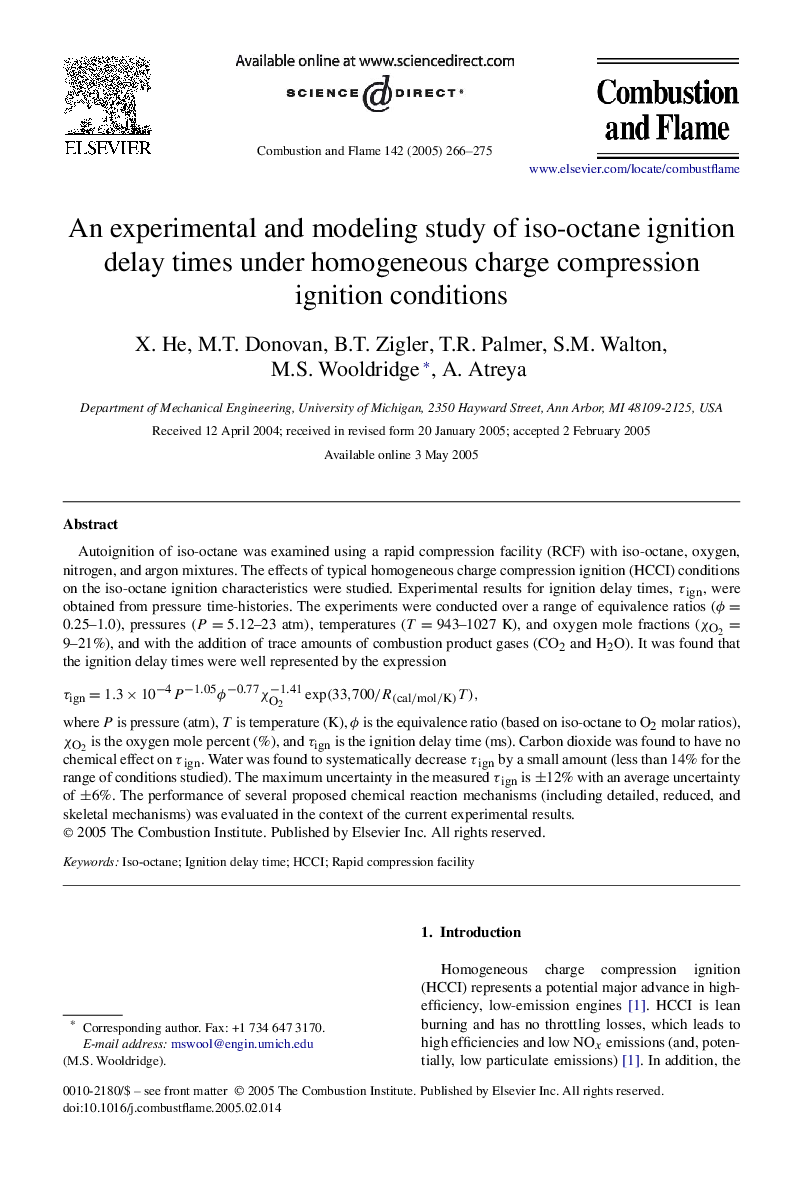| Article ID | Journal | Published Year | Pages | File Type |
|---|---|---|---|---|
| 10264444 | Combustion and Flame | 2005 | 10 Pages |
Abstract
Autoignition of iso-octane was examined using a rapid compression facility (RCF) with iso-octane, oxygen, nitrogen, and argon mixtures. The effects of typical homogeneous charge compression ignition (HCCI) conditions on the iso-octane ignition characteristics were studied. Experimental results for ignition delay times, Ïign, were obtained from pressure time-histories. The experiments were conducted over a range of equivalence ratios (Ï=0.25-1.0), pressures (P=5.12-23atm), temperatures (T=943-1027K), and oxygen mole fractions (ÏO2=9-21%), and with the addition of trace amounts of combustion product gases (CO2 and H2O). It was found that the ignition delay times were well represented by the expression Ïign=1.3Ã10â4Pâ1.05Ïâ0.77ÏO2â1.41exp(33,700/R(cal/mol/K)T), where P is pressure (atm), T is temperature (K), Ï is the equivalence ratio (based on iso-octane to O2 molar ratios), ÏO2 is the oxygen mole percent (%), and Ïign is the ignition delay time (ms). Carbon dioxide was found to have no chemical effect on Ïign. Water was found to systematically decrease Ïign by a small amount (less than 14% for the range of conditions studied). The maximum uncertainty in the measured Ïign is ±12% with an average uncertainty of ±6%. The performance of several proposed chemical reaction mechanisms (including detailed, reduced, and skeletal mechanisms) was evaluated in the context of the current experimental results.
Related Topics
Physical Sciences and Engineering
Chemical Engineering
Chemical Engineering (General)
Authors
X. He, M.T. Donovan, B.T. Zigler, T.R. Palmer, S.M. Walton, M.S. Wooldridge, A. Atreya,
